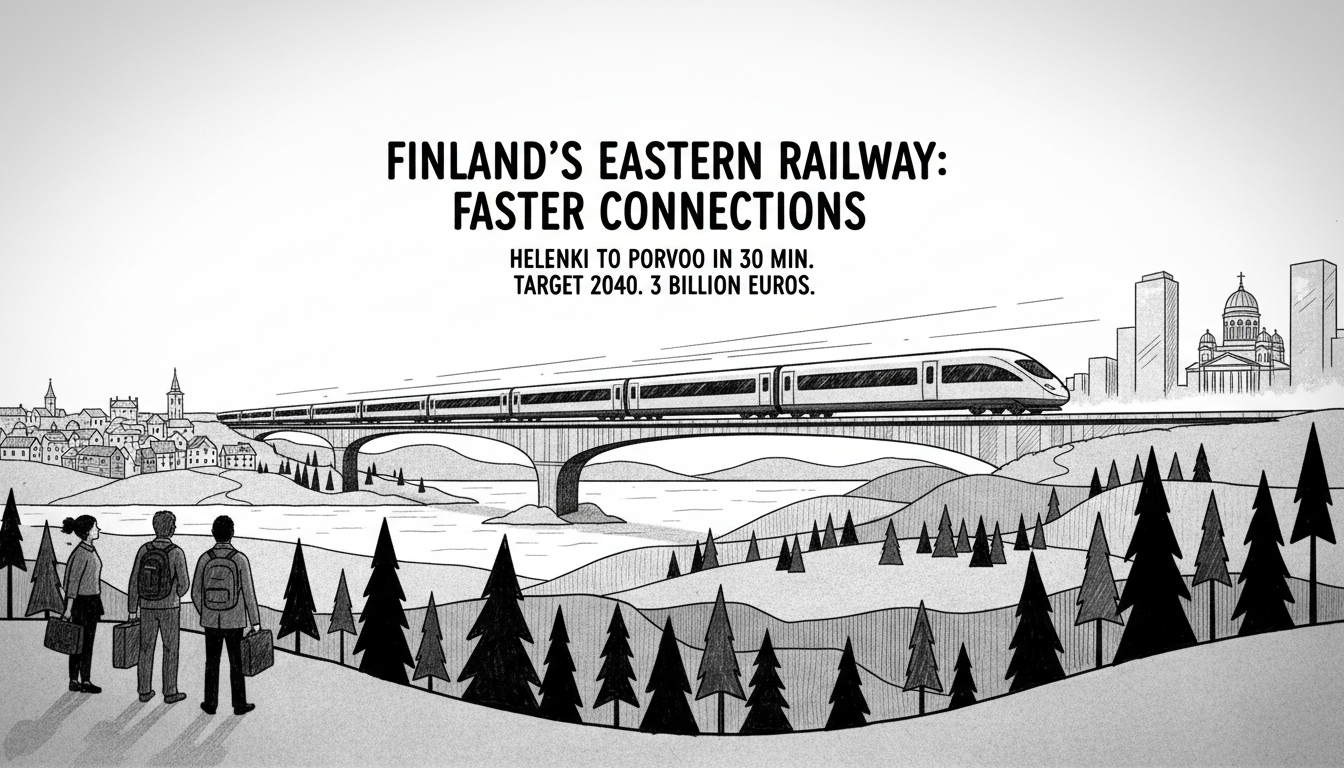Finland has chosen the final alignment for its new Eastern Railway connecting the capital region to eastern cities. The selected route will run from Korso in Vantaa through Porvoo to Kouvola, promising dramatically reduced travel times across eastern Finland. Project officials confirmed the decision this week, moving the major infrastructure project forward after extensive planning.
The new railway could slash travel times between Helsinki and Porvoo to just 30 minutes. Connections to Kouvola would take about one hour, while Lappeenranta would become accessible in just 90 minutes. These improvements represent significant time savings compared to current routes that detour through Lahti.
This infrastructure project forms part of Finland's broader strategy to enhance regional connectivity and reduce transportation bottlenecks. The Eastern Railway Company, owned by the state and 24 municipalities from Helsinki to Kajaani, leads development efforts. Construction faces multiple hurdles before becoming reality, including zoning updates and final implementation decisions.
Cost estimates range between 1.6 and 3 billion euros, with project leaders indicating figures likely fall toward the higher end. More precise cost calculations will emerge in March. The project may qualify for European Union funding support.
Finland's transportation infrastructure development follows a pattern seen across Nordic countries, where governments prioritize sustainable transit solutions. The Eastern Railway connects strategically with the planned Airport Rail Link, which would provide direct long-distance train service to Helsinki-Vantaa Airport. Both projects reflect Finland's commitment to modernizing its rail network despite budgetary challenges.
The selected route measures approximately 118 kilometers from the Airport Rail Link to Kouvola, with 110 kilometers representing entirely new track. The alignment includes substantial tunneling—19 kilometers under Sipoo and 15 kilometers through Porvoo—plus 53 bridges. Several station locations have been identified along the Porvoo-Kouvola section, including stops at Koskenkylä, Lapinjärvi, and Elimäki.
Construction could potentially begin during the 2030s, with completion targeted for 2040. The project's extended timeline reflects the complex nature of major rail infrastructure in Finland's challenging geography and climate conditions. The government's recent program mentions preparing an implementation decision for the Airport Rail Link while continuing Eastern Railway Company operations, suggesting phased development approach.
What practical benefits would international residents and businesses see from this project? The improved connectivity could make eastern Finnish cities more attractive for commuters and companies considering relocation from the increasingly crowded capital region. Faster rail links typically stimulate regional economic development while reducing environmental impacts compared to road transportation.
Project leaders acknowledge the many remaining uncertainties. Porvoo still must decide between surface-level and tunnel options for its section, with tunnel alternatives offering the fastest downtown connections. The chosen alignment represents the most direct route to Porvoo, measuring seven to eight kilometers shorter than discarded northern alternatives.
Finland's approach to major infrastructure development typically involves extensive stakeholder consultation and environmental considerations. The Eastern Railway project exemplifies this methodical planning process, though it also demonstrates the challenges of coordinating multiple municipalities and funding sources for nationally significant transportation corridors.

